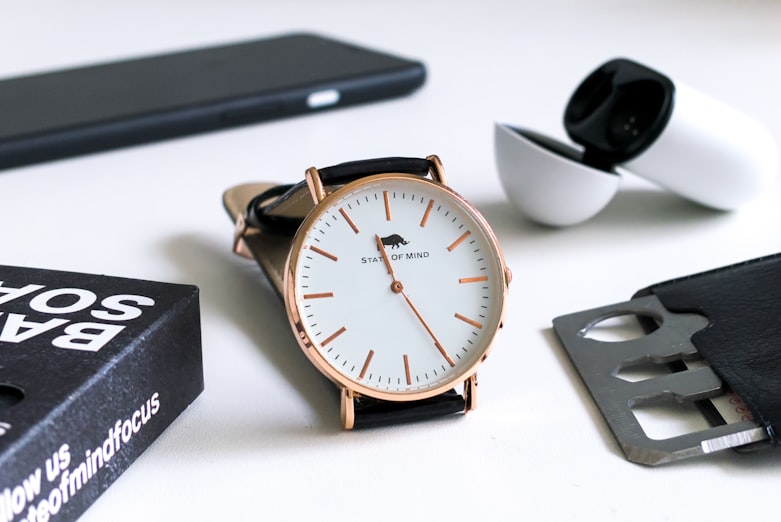Did someone ask you to send them your resume and you are startled regarding it? Questions will be coming to your mind regarding what is this resume? How to make it? What to include in it? How can the person who asked for it be impressed? In this blog, we will be exploring everything regarding a resume that will clear your queries regarding it.
A resume, also loosely known as C.V. or CV or Curriculum Vitae, is the documented version of your life filtered for professional purposes. It is a formally structured draft that includes points regarding your basic information, education, past work experience, projects, skills and much more. It lengthens as your professional career expands.

Job seekers work extensively on improving it since it is the first official introduction of yourself to the hiring manager. The better your resume is, the more impressed the hiring manager will be and the job acceptance chance will increase. Every aspiring candidate looking for a job makes a resume but you need to make such a resume that must stand out from others.
Are Resume and C.V. the same thing?
Resume and CV are the passengers of the same ship. They are similar to each other except for some minor differences.
- A resume is a single-page summary of your professional self that includes sections relevant to your jobs like Work Experience and Background. It includes details that are essential for landing the job. Whereas CV is a longer version of a resume that includes all the other things that you can’t mention in the resume like certifications, allocates, publications.
- A resume is short and must not go beyond 2 pages whereas a CV can exceed 2-3 pages.
- A resume is mostly used in job-seeking whereas a CV can be used for job seeking as well as admissions for further studies.
- A resume can be personalized for different companies and situations whereas a CV is your comprehensive diary.
These were the common differences between the two. However, the point of interest is that they are only applicable in the United States. In the Europe Union, the difference doesn’t matter as both words are used as synonyms of each other. They are the same thing there. So don’t freak out if the employer in the EU asks for a C.V when you were expecting to give him a resume.
Purpose of a Resume
A resume is an initial step towards a job application. Every corporate’s hiring committee requires the candidate’s resume in the very first step. It is made to grab the employer’s interest and pave the way towards the interview session. It does not necessarily mean that you’ll get the job with an outstanding resume. The resume’s purpose is to get the job seeker to the interview chair. Be ready to defend your resume during the interview.

The resume must be such that the employer immediately counts you in for the interview. He only skims it and calls you. So you only have a few seconds to make an impression on the employer and get your seat booked for the interview session. Remember that resume is your representation to the employer; he only knows you through your resume, henceforth, it does not need to be good but it needs to be perfect!
Planning a Resume
A resume isn’t built up in a day. It requires a thought process and personalization before it is sent out. As stated before you have to impress the employer through it.
- Is your vision clear to your employer? Think about the purpose you are joining the company. You have to make sure your purpose reaches the employer.
- Is your resume to the point? You know the purpose of your resume is to land an interview, not a job. So be precise when adding details and make it easier for the employer to read.
- Is your resume enriched? Gather all the necessary details that define you: Past Experience, Formal Degrees, Educational Background, Skill Certificates, Honors, Awards, Memberships and much more). A detailed Resume is great but for starters, you have to restrict to one to two page. Is your resume personalized? General Resumes work everywhere but to impress the employer personalization works best. Focus on the target company, analyze the qualifications required for the job, research the skills needed for the following job. Thereafter, personalize your resume according to that. Highlight projects, accomplishments, qualifications and skills relevant to the job. prioritize skills and strengths required in the job and minimize the weaknesses.
Types of Resumes
It’s time to write the resume but you don’t know what format to choose. There are a variety of formats available to choose from; you can either make a resume on your own or chose different websites to make it. Out of those many resume formats, the following three are the popular and common ones:
- Chronological
- Functional
- Combination
Chronological
As the name suggests, the format involves listing down the essential components of a resume in chronological order. It is suited best for professionals who already have an established career and a compelling employment career and is looking to expand their career in another company.
In the chronological format, right after the name, address and career objectives, the work section is listed as it is the dominating factor. Past Work Experiences are listed in the work section in reverse order, that is, current or recent position in the beginning and then listing experiences in descending order towards the first work experience. Achievements, Projects, Responsibilities, Honors and Allocates are mentioned under each job listing.
Functional
Functional Format Resume focuses primarily on the skills, achievements and accomplishments of the job applicant. IT is a less common format amongst the professionals since it is highly suited for fresh graduates who are judged mostly based on their skills and accomplishments. Functional Format is recommended to individuals who are stepping into the professional market and initiating their corporate career after completion of their education. It is also suited for those who are opting for a career change.

Unlike the chronological format, the functional format involves listing down relevant skills for the job. It is suitable to personalize it according to the job you are applying for. The functional format must be such that it should be stressing individual area of competence.
Combination
The combination format is the hybrid model that is formulated with keeping in mind the significant aspects of Chronological and Functional Resumes. Chronological is for work experience and functional is for skills while combination which is the amalgam of two is ideal for both work experience and skills in a single document.
The combination format is suited best for those who had a strong career and has built up a great skill set in their life till then. The format involves adding skills, interest and work experience right after the personal information. Follow the strategies stated above in both formats, that is: Adding Work Experience In descending order and prioritizing adding skills first that are relevant to the job.
Components of A Resume
Let us look at the major components that a resume must contain to satisfy an employer’s general requirement:
a) Personal Information
Personal Information involves your identity: Name, Permanent Address, Temporary Address, Email Address, Landline and Mobile Phone Numbers, Photograph, Social Media Handles (LinkedIn Primarily).
b) Career Objective
Career Objective defines the goal or vision you have towards the professional life. It can be permanent or temporary.
A permanent career objective is a general one that can be used for any career or any firm. It is used to exhibit a long term goal and a broader vision and works for a long time.

A temporary career objective is personalized for a specific organization or position. It is changed every time the resume is sent to other organizations.
c) Academic Information
Academic Information includes details regarding:
- Education Background: All the academics you have
acquired up till now from Secondary to University Level listed in descending order. Include Complete Institution Name, CGPA/Percentage/Grade, Major Courses, Examination Board, Passing Year in each academic listing. - Additional Qualification: This section includes all the other courses you have studied from other institutions, physically or virtually. Diplomas, Certifications, Workshops and other similar activity Is added under it as well.
- Projects: Add all the relevant and impactful projects you have taken part in. It impacts the resume as it reflects many interpersonal and technical abilities in you.
d) Past Work Experience
This section is the evidence of your work history and reflects the projects you performed there, skills used and the type of job you had been doing previously. Work Experience Section can be broken down into two subsections: Work History and Other Experience:
- Work History: This section will include all the formal work you have done previously in the form of Jobs or Internships. Documented Proof is necessary for the job to be listed in this section.
- Other Experience: The following section includes all the other work you have done of which no documented proof is present or you were not paid for it. For Example, charity work, volunteer work, unpaid internships, or any other work that is not documented.
e) Skills
This section is the one that distinguishes the candidates from each other. It is highly likely for two candidates to have a similar academic profile and work experience but it is unlike for the two be proficient in similar skills. Skills include both technical skills and soft skills. Both of them are important for one to be successful in his professional career. You know yourself better, list down the skills you think you have in yourself, that you can prove to your employer on the field.
f) Other Information
The following information is not necessary and will only lengthen your resume. However, it adds more crisp and finer details to the document that further defines who you are without meeting you.
- Events Conducted
- Webinars Attended
- Membership of Organizations
- Hobbies
- Interests
- Achievements
Do’s and Don’ts on Your Resume
The following information is essential. It highlights areas that will wither uplift your resume or make it a paper thrown in the trash. Go through them after you make the document.

Do’s
- Make it clearer for the employer to read. Leave one-inch margins and ample white spaces in the document for a balanced resume layout.
- Use simple font styles like Times New Roman or Ariel when building the resume.
- Incorporate Capital Letters, Bold, Italics and Underline.
- Try to keep the resume a one-pager or for professionals not more than 2-3 page.
- Make the resume grammar, punctuation, spelling mistake-free.
- Use action verbs when describing accomplishments.
- Make sub-headings clear, easy to read and easy to find.
- Get it thoroughly checked and proofread by three to four people in different positions in their career.
- Use a quality printer for hardcopy resume.
- Use a good quality paper.
- Insert it in the envelop or attach it with the cover letter that matches the paper color.
Don’ts
- Add Religious and Political Affiliation.
- Add Salary Information under each job listing in the Work Experience Section.
- Include Reasons for leaving the jobs listed.
- Indicate personal failures: marital life, examinations or businesses.
- Lie: Lying about the information present in the resume brings a lot of negative aroma towards you. Not only will you be rejected but you will be showered with negative feedback from the employer.
- Add too much information: Making the resume unnecessarily long will make the employer disinterested. Remember he only will skim through the resume. He doesn’t have time to go to each detail.
- Include information that would highlight discrimination.
- Color, caste, creed, gender, marital status, family background, religion.
- Submit references on the same page as your resume.
- Submit them separately if and only if the employer asks for them.
Conclusion
Now you know much about the resume. Go ahead on our website and craft one for yourself.

Keep this blog as a reference tool and you will never drift away. Happy Job Hunting 😊.
